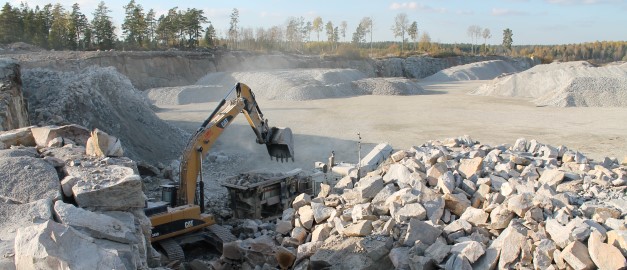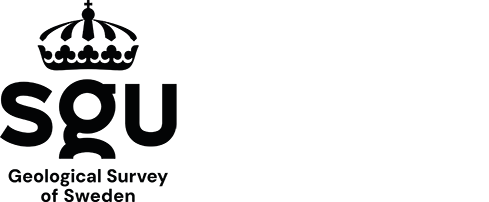
Photo: Mattias Göransson, SGU
Swedish aggregates production
SGU compiles annual statistics on the quantity of aggregates supplied from Sweden's licensed quarries. How much aggregate is needed in a year depends primarily on the economy, i.e., how much the construction sector is building. In the last few years, more than 80 million tonnes of aggregate materials were supplied from quarries.
Previously, mainly natural gravel has been used as aggregate. This was obtained from the glaciofluvial deposits. However, the greatest groundwater reservoirs are also found there. Today, groundwater protection is prioritised ahead of the extraction of gravel as a building material. For this reason, a transition to alternative materials, usually crushed rock, has long been in progress.
SGU statistics show how much aggregates have been supplied every year since 1984. At that time, natural gravel was the most common material, constituting about 80 per cent of aggregates production. Today, the situation is reversed, with more than 80 per cent consisting of crushed rock. SGU's periodical publication "Gravel, sand and crushed rock" presents annual data on aggregates deliveries and applications. Data has been submitted by licensed quarries via the Swedish Environmental Reporting Portal (SMP).
What characterises developments over the past thirty years is a decline in the number of quarries, and now there are fewer but larger quarries producing more. In particular, there is a decline in the number of small natural gravel pits, and as of a few years ago, there are more licensed rock quarries than natural gravel pits. Another trend is that increasing quantities of rock materials are extracted directly on site in connection with road and tunnel construction.
The locations and types of quarries can be seen in the Aggregates map viewer.
Aggregates map viewer (in Swedish, new window)
Statistics on Swedish production of rock materials
SGU's publication Gravel, sand and crushed rock contains comprehensive statistics on the Sweden's deliveries of natural gravel, moraine and crushed rock materials. The reports are in Swedish with summaries in English.
Gravel, sand and crushed rock 2023 (Grus, sand och krossberg 2023)
In addition to data on Swedish ore production, the SGU publication Statistics of the Swedish Mining Industry (in English) contains statistics on the production of energy peat, natural stone and industrial minerals.
Statistics of the Swedish Mining Industry 2023
Recycled aggregates
Recycled aggregates are not included in the data reported to the SMP. SGU has performed a study on how data on the use of recycled aggregates can be collected. This work was reported in 2015.
Last reviewed 2020-09-21
